- Last Updated: March 16, 2025
Melbourne is the second largest city in Australia, accommodating 5.2 million people. Still, it is considered one of the most livable cities in this world. Among the other cities, it is considered the most ‘European’, making Melbourne for digital nomads an ideal destination. This city’s strong arts, café culture, and thriving tech eco-system support a flexible, remote work lifestyle.
Table of Contents
ToggleIn today’s article, we’ll cover everything you need to know to start your digital nomad journey in Melbourne. From basics like cost of living, visa requirements, best time to visit to top co-working spaces, cafes, things to do in Melbourne, all detailed information will be covered. So without any further delay, let’s dive into Melbourne!
Melbourne for Digital Nomads in 2024
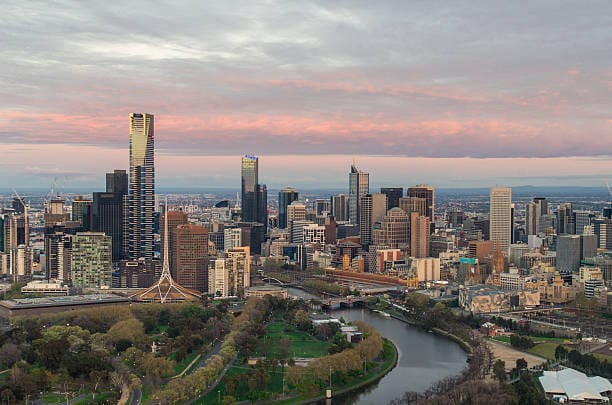
Cost of Living
Australia is known as an expensive country; that’s why living in Melbourne Australia can cause some challenges. But we can’t deny the fact that it is significantly cheaper than the nearby city, Sydney, which is only an hour away by plane. This is the reason Melbourne for digital nomads is quite appealing.
It has various price points, from high-end luxury to budget accommodations, ensuring there’s something for everyone. With proper planning, you can make your stay in Melbourne affordable.
The currency of Australia is known as the Australian Dollar (AUD), having an exchange rate of 1.50 AUD against USD (costs below are given in AUD). There is not a big tipping culture, as service fees are included in the prices so that the staff receives a fair wage. Still, if you want to tip, you can. It’s totally optional.
Below we will break down the costs of accommodation, food, transportation, and other activities that you can enjoy here to give you a clear picture of what to expect while living in Melbourne, Australia, as a digital nomad. Here are the costs at a glance:
► Accommodation: AUD 1,500 – AUD 2,000 (rent for a one-bedroom apartment)
► Food: AUD 800 – AUD 1,000 (breakfast + lunch + snacks + dinner)
► Transportation: AUD 160 (monthly ticket for public transport)
► Health Insurance: AUD 100 (private health insurance)
► Internet Packs: 50GB for AUD 40 (Telstra)
► Sightseeing: AUD 100 – AUD 200 (covers most entrance fees to attractions & museums)
► Taxes: Progressive tax rates starts at 19% on income earned within Australia
So, overall, living in Melbourne, Australia can cost you around AUD 3,000 – AUD 4,000 per month to live a comfortable lifestyle.
Passport & Visa Requirements for Melbourne
The Australian passport is globally ranked as the 7th strongest passport worldwide, according to the Passport Index (as of September 2024). That means Australian citizens can visit 113 countries visa-free and 53 countries visa-free on arrival. So having an Australian passport is beneficial.
Australia has embraced the remote work lifestyle with the introduction of the Australian Digital Nomad Visa (subclass 600). Eligible criteria:
► Age: You must be at least 18 years old.
► Income: There is no fixed income set, but you need to at least show the funds to cover your stay in Australia.
► Employment: self-employed, a freelancer, or an employee of a foreign company with an authorization to work remotely.
► Nationality: It is available to most nationals around the globe. including
The Australian Digital Nomad Visa allows you the opportunity to stay in Australia for an extended period of up to 12 months. This permits digital nomads to involve themselves in local activities and explore the country more thoroughly.
You may also like- Japan Digital Nomad Visa
Best Time to Visit Melbourne

There’s no bad time to visit Melbourne Australia, as the weather here changes so frequently. If you like summer seasons, visit during the summer months of December-February, If you like cooler seasons, visit during the winter months of June-August.
If you’re looking for a little quieter of a season, then the timeframe around spring or autumn would be the best because the summers can get really hot and the winters can get pretty chilly.
Melbourne backpackers can go either around end-march to mid-may or around October to November. These are the times when the weather is either changing from summer to winter or vice versa, so you will get more pleasant weather.
However, Melbourne is known for its four-weather, 1-day’ routine, so make sure to take a jacket or two, 1 sweater/hoodie, & an umbrella. You will probably end up wearing a jacket on most nights, as it tends to get a bit chilly around that time.
Besides, it can really rain on any day, so check the weather forecast every morning & wear clothes accordingly before leaving your accommodation.
Rent
The Melbourne Rent Index(MRI) increased by 4.6 percent over the March quarter, & by 14.6 percent over the past year. Although the rent really depends on where you’re staying & your income status. If you want a safe leafy town to live in, the outer east is considered a nice part of Melbourne yet only 45 mins by train & 30 mins drive to Melbourne CBD.
If you want to live closer to town, try Preston & Collingwood areas which are reasonably priced & fairly safe. Again, if you want a more upmarket feel, try Camberwell, Box Hill & so forth. More discussions about the neighborhoods would be given onwards.
➢ Price Range: Expect to pay anywhere from AUD 1,500 to AUD 2,000 for a one-bedroom apartment. However, rent can reach up to AUD 2,500 if you’re looking to stay close to the city center. The overall cost depends on how big is your apartment, what benefits you are getting, especially proximity to the city center. Costs tend to decrease if you’re staying far away from city or in the suburb areas.
➢ Hostels: Hostels can be a great option for nomads Melbourne backpackers. If you’re staying for a short period & want to meet new people, you should go for hostels. Dorms typically cost around AUD 40 to AUD 60 per night. Some highly rated hostel nomads Melbourne are:
1. The Nunnery
2. Space Hotel
3. United Backpackers Melbourne
4. Nomads Melbourne Backpackers
Best Neighbours in Melbourne for Digital Nomads
Melbourne has a lot of neighborhoods, every single one of it has its own unique vibe. Whether you wanna live in a nearby city or in a quieter suburb, both options are available for you. Digital nomads in Melbourne Australia, have some of the best neighborhoods to live in, here are few:
➣ Collingwood

Are you looking for a cool, creative atmosphere? Collingwood got you covered. It’s filled with cafés, bars, and galleries, making it popular among youths and professionals.
Distance to CBD: 10 minutes by tram
Rent: AUD 1,500 – AUD 2,000 per month
➣ Preston
Preston is another good option for you to consider; it has a mix of residential and industrial areas. It is quite affordable compared to Collingwood and also well-connected to the CBD by public transport.
Distance to CBD: 20 minutes by train
Rent: AUD 1,300 – AUD 1,800 per month
➣ Camberwell
Camberwell is a family-friendly area. It has parks, schools and a strong community to make you feel at home.
Distance to CBD: 20-30 minutes by tram
Rent: AUD 2,000 – AUD 2,500 per month
➣ Malvern
Looking for a suburb to live peacefully, with beautiful parks and amazing streets? Malvern would be a good pick for you.
Distance to CBD: 30 minutes by tram
Rent: AUD 1,800 – AUD 2,500 per month
➣ Box Hill
Box Hill is a fast-growing suburb among other suburbs. It is mostly known for its Chinese community. It has a lot of shopping centers and beautiful parks to pass your leisure time peacefully.
Distance to CBD: 30 minutes by train
Rent: AUD 1,600 – AUD 2,200 per month
Each of the neighborhoods has its own taste to offer, from affordability to being close to the city, making them great options for those who want to live their nomadic lifestyle in Melbourne.
Transportation
Melbourne has one of the finest public transportation systems. Nomads here don’t need to worry about how to get around the city, we’ve discussed below about the transportation system and how to use it:
Trams
One of the coolest things about Melbourne is its tram system. They crisscross the city and nearby suburbs, making it super helpful for people not living in the CBD. There is a Free Tram Zone within the city center, inside this zone, you can ride for free, meaning no card, no payment, and no hassle. But if you want to move around, you’ll need a Myki card.
Myki card is something Australian people use for transportation. You can load it with money and use it for your transportation. It covers trams, trains, buses, and cycling.
Trains
If you’re planning to go further distances where the tram doesn’t cover, you can use trains. For tourist spots like Brighton Beach, the Dandenongs, or the outer suburbs the train is your best bet. Trains are available every 10-20 minutes. They run from 5 a.m. until midnight. the
Again, you’ll need a Myki card for using trains. Train fares aren’t that expensive, though.
Buses
Buses are useful for reaching areas that aren’t covered by trams or trains. Buses are available everywhere, they go everywhere where the other transportations can’t reach, making buses a great and only option for traveling.
Cycling
Bike lovers, you will be glad to know that Melbourne is bike friendly. It has a separate line for bikes. Some of the most popular lines are the capital city trail and the St. Kilda Beach ride, both offering scenic views. Even if you don’t have a bike, you can hire one from the bike sharing services.
Fares and Myki Cards
Everything runs on the Myki card—a smartcard that works for public transportation like trams, trains, & buses. You can pick one up at major stations or convenience stores & top it up as you go. For a one-way ride, it costs around 4.60 AUD, you can also pay 10 AUD for a full day, meaning no matter how much you travel, you won’t be charged extra.
If you’re staying longer, you should go for a weekly or monthly pass to save a bit of money.
Tips for getting around the city:
► Download the PTV app for timetables, journey planning, & live updates.
► Take advantage of the free tram zone.
► Use your Myki card properly to avoid delays.
► Use these transport apps for more convenient navigation.
► For enjoying a beautiful view, catch tram 96 from St Kilda Beach to Fitzroy—it’s really a lovely experience.
There are plenty of things to do in Melbourne, and with the city’s efficient public transport system, exploring and navigating without the hassle of driving is a blessing.
Check out- Best 20 Tips to Get Cheap Flight Tickets
Food
Modern Australian cuisine has seen a mixture and influences of British colonial history, diverse food cultures of immigrants from the Middle East and Asia. Melbourne, in particular, is renowned as a foodie’s paradise and coffee capital of Australia. Despite being a melting pot of cultures, there are a few classic Aussie dishes every visitor should try:
➣ Chicken Parma:

If you haven’t tried Chicken Parma (also known as, “Chicken Parmigiana”), you’re missing out on a key part of Australian cuisine. It is basically, a deep fried chicken breast in a bread crumb, topped with tomato sauce, and some cheese or melted mozzarella. Sometimes ham is used alongside chicken. the
This dish is a staple on pub menus and is often a popular choice for a classic, hearty meal.
➣ Meat Pies:
Another iconic Aussie dish you should definitely try out is the famous meat pies. They’re a staple at almost every major event and restaurant. To highlight the nation’s passion for this classic meat and gravy pie, consider this: about 24 million Australians consume up to 300 million meat pies annually!
➣ The Coffee Culture:
Melbourne has a thriving coffee culture. C’mon, it’s the coffee capital of Australia! The city’s café culture is centered around espresso-based drinks like the flat white, long black, and cappuccino.
Coffee is more than just a beverage here—it’s a social experience, and Melbourne’s cafés are famous for their barista skills and perfect cups of coffee. If you are visiting Melbourne, you can’t miss out on experiencing its renowned coffee culture.
Internet Speed
Australia has an average speed connection of 40 Mbps. To view the highest quality, ultra-high definition video content from Netflix, it is suggested to have a 25 Mbps connection or better.
For those working from home, Zoom meetings with video and screen sharing enabled need around 6 Mbps. So for the average Australian internet user, there is not much that you cannot do with 40 Mbps as your internet speed. Service providers like Telstra & Optus offer some of the fastest options, & fiber optic connections are widely available.
Co-working Spaces
Melbourne is a top destination for digital nomads & has no shortage of co-working spaces. These spots are perfect for remote workers looking for a quiet, productive environment & a chance to connect with other digital nomads.
➣ The Commons:
The Commons offers professional and creative workspaces at seven convenient locations in Melbourne. Each venue features amenities like high-speed Wi-Fi, workshop rooms, video conferencing facilities, rooftop beer gardens, libraries, record lounges, podcast studios, and sensory rooms. Members enjoy membership facilities that provide access to the communal workspace.
➣ The Hive:
The Hive is another great option for remote workers to get their job done in Melbourne. Known for its stylish design and flexibility, The Hive is designed for freelancers, creative entrepreneurs, and start-up businesses. Amenities include fast Wi-Fi, ergonomic seating options, meeting rooms, and a vibrant community.
Besides, their central location provides easy access to public transport, making it a convenient option for digital nomads and local entrepreneurs alike.
➣ Hub Australia:
As Australia’s leading workspace operators, Hub Australia has created suitable environments for teams and individuals who work remotely. Their flexible workspaces, hospitality-inspired service, and wellness programs offer an unparalleled experience.
With 15 clubhouses, they have established widespread privately owned flexible workspaces in Australia.
Cafes
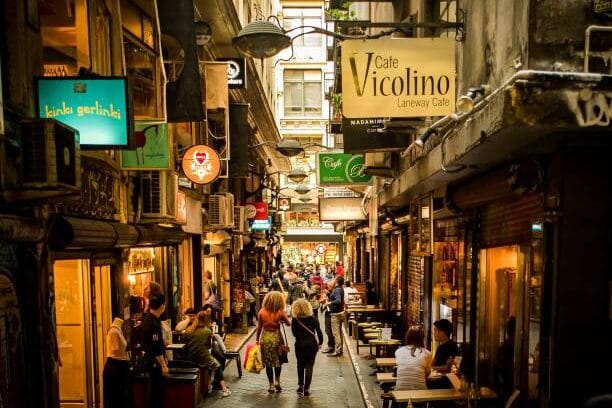
Melbourne is known as the coffee capital of Australia. If you search on google ‘Nomad cafe Melbourne’ you will get plenty of coffee shops that are nomad friendly, even there’s a coffee shop named Nomad cafe Melbourne.
So you are getting an idea how good the coffee culture is in Melbourne. Here are few:
➣ Nomad Cafe Melbourne:
A literal hidden gem for digital nomads. Nomad Cafe Melbourne is known for its delicious food, great service, and, of course, fast and free Wi-Fi! It’s a great place to get some work done while enjoying a snack or a flat white. You’ll also meet plenty of other travelers here.
➣ Mr Tulk:
Mr Tulk is a stylish café located at the State Library of Victoria in Melbourne. It’s a great spot for remote workers! Here you’ll often see people working with laptops, having coffees, and working remotely in a friendly atmosphere.
Besides, this place offers a variety of coffee options, light meals, and comfortable seating options. It’s a popular spot for students, freelancers, and library-goers looking for a cozy place to work or relax.
➣ Higher Ground:
Situated at the heart of Melbourne’s CBD, Higher Ground is a great option for digital nomads. It is an old power station-type building, but you will have a cozy feeling instead of being too cold inside.
It has its own rustic-greeny style, offers good food, and a welcoming atmosphere for remote workers. They can access the power outlets and free Wi-Fi, and there are outdoor seating options too. Highly Recommended!
Safety Index - Nomad Insurance
Melbourne is generally considered safe because of its good legal systems. According to Numbeo, Melbourne scores a safety index of 56.36 (as of September 2024), making it a fairly safe city to live & explore.
However, just like in any big city, pickpocketing & petty theft can occur in crowded areas, especially during peak tourist seasons. So, it’s important to stay alert & take common-sense precautions.
Health Insurance for Nomads
Having health insurance is essential while living in Melbourne, or anywhere in Victoria Australia. In your things to do in Melbourne list, the utmost priority should be getting health insurance if you don’t have any.
While the city has a robust healthcare system, non-residents aren’t covered under Medicare (Australia’s public health system) unless they come from a country with a reciprocal healthcare agreement.
Nomads must stay mindful of securing comprehensive travel or health insurance that covers:
• Emergency medical care
• Hospitalization
• Outpatient & specialist care
• Repatriation in case of emergencies
While health insurance isn’t mandatory for entering Australia, it’s highly recommended for digital nomads. Many choose international nomad insurance plans that cover both routine checkups & unexpected medical emergencies. Options like World Nomads, SafetyWing, & Allianz Global can be great choices for covering your stay in Melbourne.
Melbourne Australia Attractions
Melbourne for digital nomads is a great choice as it offers a vibrant digital nomad lifestyle. There are a lot of things to do in Melbourne. It doesn’t matter if you’re into art, history, or nature, there’s something for everyone. In below we have discussed some of Melbourne Australia attractions:
➣ National Gallery of Victoria:
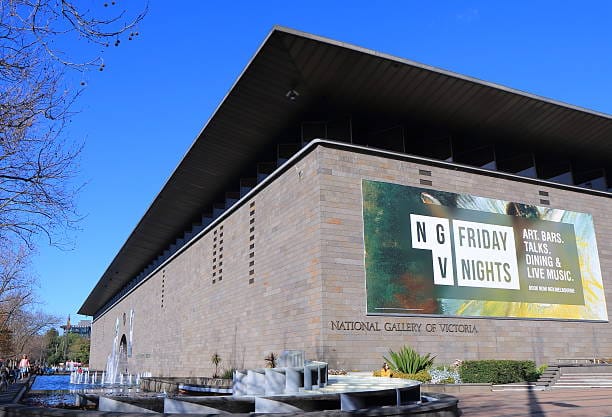
The National Gallery of Victoria (NGV) is the most popular and visited art museum in Australia. It houses an extensive collection of over 70,000 works. The gallery is split into two locations: NGV International, showcasing international artwork, and The Ian Potter Centre, dedicated to Australian art and culture.
This iconic architecture is renowned for its temporary exhibitions throughout the year. Besides, entry is free for some exhibitions and to the permanent collection. If you love art and culture, the NGV is a must-visit for you!
➣ Fedaration Square:
Federation Square is the public square of Melbourne. It is also known as “Fed Square.” This architectural marvel houses several major cultural institutions, including the National Gallery of Victoria (NGV), the Australian Centre for the Moving Image (ACMI), and the City of Melbourne Visitor Centre. Besides, shopping, cafes, restaurants, and tourism services are available here.
Fed Square hosts over 2000 events and gatherings and 8 million visitors a year. In fact, it is the most happening place in Melbourne. Whatever your interests, there’s something for you at Fed Square!
➣ Royal Botanic Gardens:
The Royal Botanic Gardens in Melbourne is one of the country’s oldest and most beautiful botanical gardens. It is located in a short walking distance near the city centre. Attracting over 1.9 million visitors each year, it features native Australian flora, four separated swamps, and over 30,000 species of plants.
Apart from this, this place hosts exhibitions, education programs, and offers guided tours.
➣ Melbourne Cricket Ground:
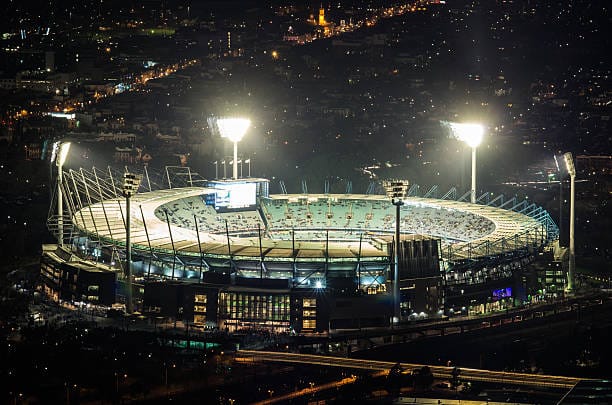
The MCG is the largest stadium in Australia. It is the home ground of the Australian cricket team and the Victorian Football League team, the Melbourne Demons. It has hosted major sporting events, including the ICC Cricket World Cup, FIFA World Cup, and the Olympic Games. Besides, the iconic Boxing Day Test match is held here.
Being Australia’s sporting capital, Melbourne is definitely a must-visit place for sports lovers.
Is Melbourne a Good Option for Digital Nomads?
In Melbourne, this city is known as ‘the settlement’, which indicates how good it is for people who want to settle and do good in life. With diverse Melbourne Australia attractions and a thriving digital community, Melbourne for digital nomads is a fantastic destination, particularly for Nomads Melbourne backpackers looking to settle into the city’s vibrant lifestyle.
Just like no city is perfect in this world, Melbourne also has its drawbacks. With a moderate crime rate, it could be sketchy to be around, although with proper precautions and being alert, you could avoid the problem. If we look behind the drawbacks, there are plenty of good things around, like good food, good transportation, a good bureaucracy system, and nice scenery. In short, this city has much to offer.
So if you want to start your digital nomad journey, weighing the pros and cons against your personal preferences and priorities will help you decide if Melbourne is the perfect option for you.
If you find this article helpful, please share it on your social media to help other digital nomads. Also, if you have previous experiences in Melbourne as a digital nomad, feel free to share those experiences in the comment section. We would love to hear!
You may also like this: Living in Lisbon as a Digital Nomads : The Ultimate Guide
Sign Up for Our Newsletter
Subscribe to our weekly newsletter where we share information, useful tips, resources, and inspiring stories of the digital nomad lifestyle and remote work culture straight to your email.
Share this article:
Follow us on:
Related Posts

10 Cheapest Places for Digital Nomads
Last Updated: May 31, 2025 Digital nomadism is quite a familiar concept now. People willing to escape the 9 to 5 grind and travel the world while working from anywhere,…

15 Best Places to Work Remotely in Austin, Texas
Austin, Texas, isn’t simply known for its vibrant music scene and tech scene; it is also a famous spot for remote workers seeking flexible workspace. Along with its wide range…
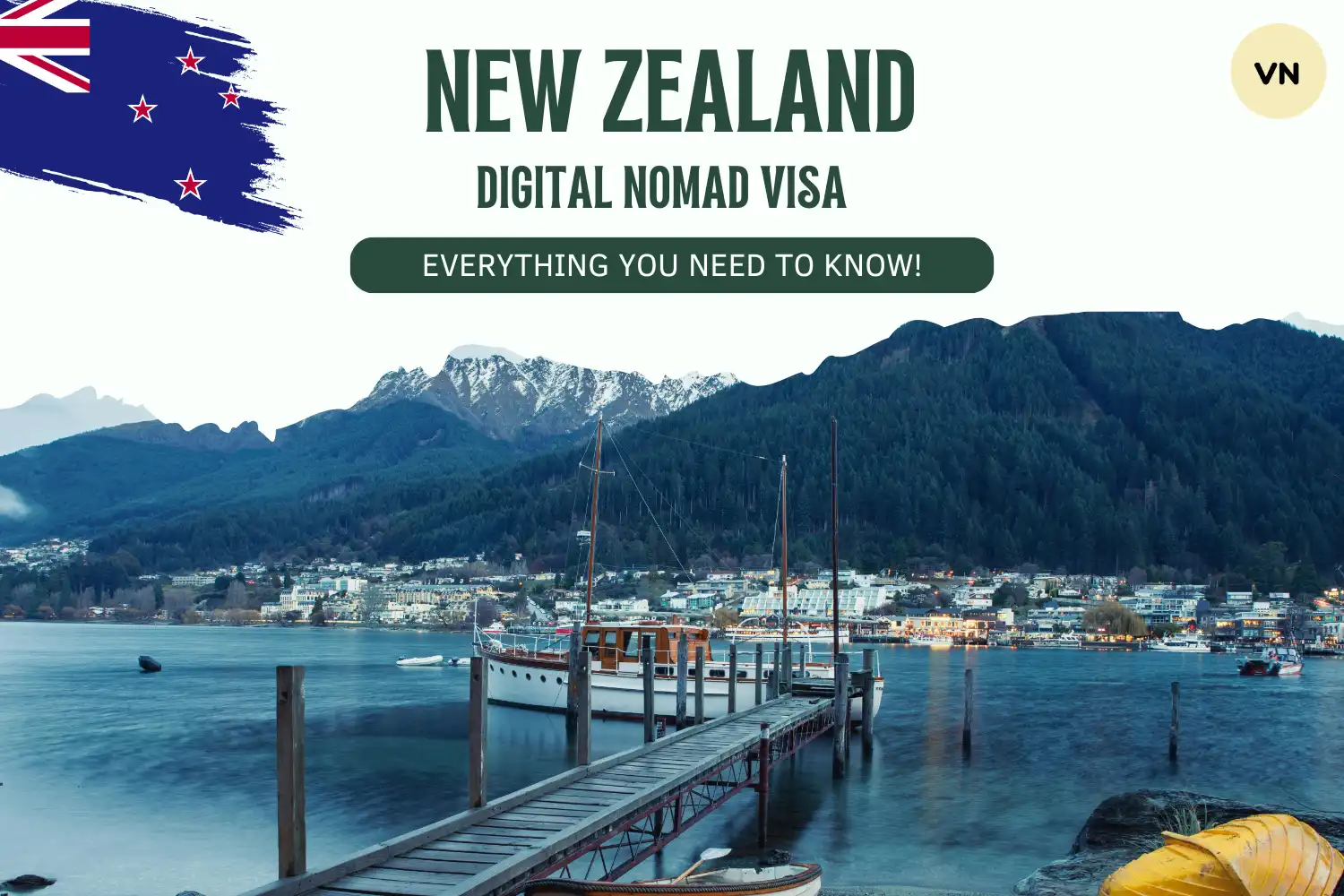
New Zealand Digital Nomad Visa: Everything You Need to Know!
Ever wished to work remotely as a digital nomad from New Zealand without any unnecessary hassle? With the newly updated New Zealand Digital Nomad Visa regulations, this dream is now…
